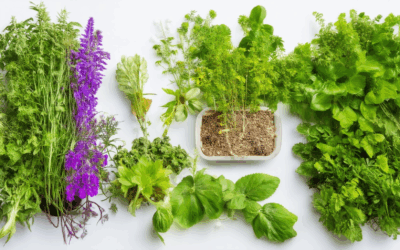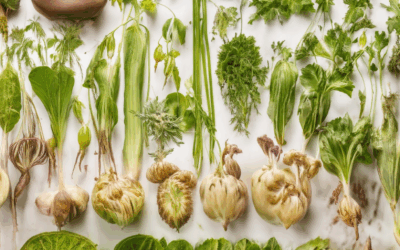With the increasing demand for sustainable living, many urban residents are turning to organic home farming as a way to reduce their environmental footprint and enjoy fresh produce year-round. While urban farming presents unique challenges, such as limited space and potential contamination from pollutants, it also offers immense rewards. Whether you’re a seasoned gardener or just beginning, this guide will provide practical tips, address common obstacles, and highlight the benefits of practicing organic home farming in an urban setting. From maximizing small spaces to overcoming pests and diseases, we’ll explore everything you need to know to get started. Join us as we delve into the world of urban organic farming, where creativity and dedication can lead to a thriving green thumb and a healthier lifestyle.
Key Takeaways
– Maximize Space with Vertical Farming: Utilize vertical gardens or wall-mounted planters to grow herbs, veggies, and flowers efficiently in urban settings.
– Space-Saving Crops: Opt for compact varieties like cherry tomatoes, bell peppers, and leafy greens to make the most of limited space.
– Compost for Soil Health: Recycle kitchen scraps and yard waste to create nutrient-rich compost, enhancing plant growth and reducing waste.
– Conserve Water with Drip Irrigation: Use efficient watering systems to minimize water use and keep plants hydrated consistently.
– Sustainable Practices: Employ natural pest control methods, such as companion planting, to maintain garden balance without chemicals.
– Container Gardening: Use decorative pots or repurposed items to grow plants in small spaces, allowing easy movement.
– Heirloom Seeds for Flavor: Explore unique, flavorful heirloom seeds for better taste and regional adaptation.
– Community Collaboration: Join urban farming groups to share knowledge and resources, supporting both personal and communal goals.
– Seasonal Planning: Adjust planting schedules to align with local climate and seasons, ensuring year-round productivity.
– Healthy Soil Starts Here: Test soil pH and enrich it with compost to support robust plant growth.
– Choose the Right Crops: Select region-specific plants suited to your climate and growing season.
– Efficient Watering Systems: Implement drip irrigation and mulch to conserve water and maintain soil moisture.
– Natural Pest Solutions: Use companion planting and beneficial insects to control pests organically.
– Mulch for Moisture and Weed Control: Apply organic mulch to retain water, suppress weeds, and regulate soil temperature.
– Rotate Crops for Sustainability: Practice succession planting to maximize space and ensure continuous harvests.
– Support Biodiversity: Incorporate native plants and pollinator attractors to build a healthier garden ecosystem.
– Integrated Pest Management: Monitor for pests and use natural predators to maintain garden health.
– Harvest at the Right Time: Pick produce when ripe to maximize flavor and nutrition.
These strategies empower you to succeed in organic home farming, offering both personal fulfillment and environmental benefits.
Starting an Organic Home Farm in an Urban Setting
Starting an organic home farm in an urban environment presents unique challenges but also offers numerous opportunities for sustainability and self-sufficiency. Here are some practical tips to help you get started:
- Plan Thoroughly
- Assess your available space and sunlight conditions.
- Research local regulations regarding urban farming.
- Determine which organic crops are suitable for your climate and growing season.
- Select the Right Crops
- Choose plants that thrive in smaller spaces, such as herbs, vegetables, and certain fruits.
- Consider sequential planting to maximize space and continuity.
- Look into dwarf varieties or vertical gardening solutions for taller crops.
- Implement Water Management Systems
- Install rainwater harvesting systems to conserve water.
- Use drip irrigation to efficiently water plants.
- Recycle greywater for non-edible plant uses.
- Composting and Soil Health
- Start a compost pile to enrich your soil naturally.
- Add mulch to retain moisture and suppress weeds.
- Use worm composting for nutrient-rich vermicomposting.
- Pest and Disease Control
- Practice crop rotation to disrupt pest life cycles.
- Use natural pesticides like neem oil or insecticidal soap.
- Rotate chickens or ducks through your garden for pest control.
- Engage with Your Community
- Join local gardening groups or urban farming networks.
- Share your harvest with neighbors or consider selling at local markets.
- Participate in urban farming workshops or events.
By following these tips, you can successfully establish a thriving organic home farm in your urban environment. Remember to stay patient, persistent, and enjoy the rewards of your labor!
Key Challenges of Organic Home Farming in Urban Settings
Organic home farming in urban environments presents unique challenges due to the confined spaces, limited resources, and environmental conditions compared to rural settings. Here are the primary obstacles faced by urban farmers:
- Space Constraints : Urban lots are often small, making it difficult to accommodate traditional row cropping or large garden beds. Farmers must rely on creative solutions like vertical farming, container gardening, and raised bed systems to maximize space.
- Limited Resources : Urban areas typically have less access to arable land, water, and fertilizers. Farmers may need to reuse or recycle materials like compost and mulch to sustain productivity.
- Seasonal Variations : Urban microclimates can cause unexpected changes in temperature and rainfall patterns, affecting crop growth and harvest timing. Adapting to these conditions requires flexibility and knowledge of season-specific crops.
- Pest Control Challenges : With limited space and resources, managing pests becomes a significant challenge. Farmers often turn to natural methods like companion planting, crop rotation, and biological pest control to maintain balance.
- Water Usage : In dry climates, accessing enough water for crops can be difficult. Farmers may need to implement water-saving techniques like drip irrigation systems or rainwater harvesting.
- Biodiversity Limitations : Urban farms often lack the biodiversity needed to support pollinators and beneficial insects. Planting native species, flowers, and herbs can help attract pollinators while improving soil health.
- Regulatory Issues : Urban farming operations may face stricter regulations regarding land use, zoning, and food safety. Farmers must comply with local laws to operate legally and safely.
- Soil Preparation : Urban soils may be compacted, contaminated, or lacking in organic matter. Preparing healthy soil often requires testing pH levels, adding compost, and amendments to create fertile growing media.
- Community Support : Urban farming projects often rely on community involvement for success. Farmers may need to engage neighbors, local organizations, or schools to share resources and knowledge.
Overcoming these challenges requires creativity, resourcefulness, and a deep understanding of sustainable farming practices. By adopting innovative techniques and building a supportive community, urban farmers can successfully grow fresh, organic produce in even the most constrained environments.
What Are the Benefits of Practicing Organic Home Farming in Urban Settings?
Organic home farming in urban areas offers a multitude of benefits that extend beyond just growing plants. Here are some key advantages:
Fresh and Nutritious Produce
Growing your own fruits, vegetables, and herbs ensures you get fresh, nutrient-dense crops. Unlike store-bought produce, which may lose nutrients during transportation and storage, organic crops retain their vitamins and minerals, offering healthier options for your family.
Eco-Friendly Practices
Organic farming reduces reliance on synthetic pesticides and fertilizers, minimizing harm to the environment. By composting kitchen scraps and using natural methods like companion planting, you contribute to biodiversity and sustainable land use, making urban spaces more eco-friendly.
Sustainable Living
Urban farming promotes self-sufficiency and reduces your carbon footprint. By locally growing your food, you minimize transportation emissions associated with imported goods. Additionally, recycling household waste through composting supports a circular economy, aligning with sustainable living principles.
Cost-Effective Solution
Growing your own food can save you money in the long run. While initial setup costs may be involved, the harvest from your garden can replace expensive supermarket purchases. Over time, the investment pays off as you enjoy fresh produce at a lower cost.
Community Building
Engaging in urban farming often leads to community connections. Sharing tips, swapping produce, and participating in local events can foster a sense of belonging and collaboration among neighbors.
Natural Pest Control
Organic farming relies on natural pest control methods, such as introducing beneficial insects or using organic sprays. This approach avoids harmful chemical pesticides, creating a safer environment for people, pets, and wildlife.
Improved Air Quality
Plants grown organically release oxygen and absorb carbon dioxide, contributing to cleaner air quality in urban areas. This makes your home environment healthier, especially for those with allergies or respiratory conditions.
Reduced Waste
By reducing plastic packaging and waste associated with store-bought food, urban farming promotes a zero-waste lifestyle. Composting and reusing resources enhance sustainability efforts in densely populated cities.
Seasonal and Local Eating
Organic home farming allows you to grow seasonally available produce, ensuring you eat fresher, tastier foods that are harvested at peak ripeness. This connection to the seasons encourages healthier eating habits and a deeper appreciation for nature’s cycles.
Learn more about organic farming techniques and how to get started in your own backyard.
How Can Someone Successfully Practice Organic Home Farming in an Urban Environment?
To effectively practice organic home farming in an urban setting, consider the following organized approach:
- Vertical Farming : Utilize vertical gardens or wall-mounted planters to maximize space. This method allows you to grow herbs, vegetables, and flowers efficiently without needing extensive ground area.
- Space-Efficient Crops : Choose plants that thrive in confined spaces, such as cherry tomatoes, bell peppers, and leafy greens. Dwarf varieties and climbing plants can also save space.
- Composting : Implement a composting system to recycle kitchen scraps and yard waste. This not only reduces waste but also enriches your soil, promoting healthy plant growth.
- Water Conservation : Install drip irrigation systems to minimize water usage. This approach ensures consistent hydration for plants while conserving resources.
- Sustainable Practices : Incorporate natural pest control methods, such as companion planting and biological controls, to maintain balance in your garden without harmful chemicals.
- Container Gardening : Use decorative containers or repurposed materials to grow plants. This method is ideal for limited spaces and allows for easy mobility.
- Heirloom Seeds : Explore heirloom seeds for unique and flavorful varieties. These seeds often have better taste and are adapted to specific regions, making them a valuable addition to your urban farm.
- Community Support : Join local gardening groups or participate in urban farming initiatives to share knowledge and resources. Collaborative efforts can enhance your success and provide fresh produce for your community.
- Seasonal Planning : Adjust your planting schedule based on the local climate and seasonality to maximize productivity and enjoy fresh, organic produce year-round.
By adopting these strategies, you can successfully cultivate an organic garden in an urban environment, contributing to a healthier lifestyle and a more sustainable world. For further insights and resources, visit Old Seed to discover heirloom gardening techniques and sustainable farming practices.
Essential Tips for Growing an Organic Garden
Organic gardening offers a rewarding experience, fostering a connection with nature while promoting environmental health. To achieve a thriving garden, consider these proven tips:
- Start with the Right Soil Preparation: Begin by testing your soil pH levels and incorporating organic matter like compost or aged manure. This ensures healthy plant growth and proper nutrient absorption.
- Choose the Best Plants for Your Climate: Select crops suited to your local climate and growing season. Visit Old Seed’s gardening guide for region-specific recommendations.
- Water Efficiently and Consistently: Use drip irrigation systems to conserve water and prevent overwatering. Water deeply but less frequently to encourage root development.
- Practice Composting: Create a compost pile to recycle kitchen scraps and yard waste. Consider trying worm composting for a sustainable solution.
- Optimize Sunlight Exposure: Most plants require full sun, but some thrive in partial shade. Plan your garden layout to maximize sunlight access for your chosen vegetables and flowers.
- Protect Against Pests Naturally: Implement integrated pest control strategies, such as companion planting or introducing beneficial insects. Explore natural pest solutions for effective results.
- Use Mulch to Retain Moisture: Apply thick layers of organic mulch around plants to retain moisture, suppress weeds, and regulate soil temperature.
- Plan for Succession Planting: Rotate crops and plant seasonal varieties to maximize garden space and ensure continuous harvests. Discover seasonal gardening tips for optimal yield.
- Build a Sustainable Garden Ecosystem: Incorporate native species and pollinator-attracting plants to support biodiversity. This promotes a healthier garden ecosystem.
By following these tips, you can create a productive and eco-friendly garden. Remember to always seek knowledge from reliable sources like Old Seed to stay updated on the latest gardening trends and techniques.
Best Practices for Organic Home Farming
Organic home farming offers a rewarding experience that promotes environmental health and self-sufficiency. To maximize productivity and sustainability, consider the following proven practices:
1. Soil Preparation and Testing
- Test your soil’s pH level and nutrient content to ensure it’s healthy for your crops.
- Use compost or aged manure to enrich the soil, providing essential nutrients and improving soil structure.
- Choose the right tools and equipment tailored to your farm size and specific crops.
2. Composting
- Set up a compost pile with kitchen scraps, yard waste, and manure to create rich, organic matter.
- Turn the pile regularly to aerate it and speed up decomposition.
- Add compost to your garden beds to boost plant growth and reduce the need for chemical fertilizers.
3. Watering Techniques
- Water plants deeply but less frequently to encourage root development and reduce water loss through evaporation.
- Use rainwater collection systems or greywater to supplement your irrigation.
- Mulch around plants to retain moisture in the soil and suppress weed growth.
4. Crop Rotation
- Rotate crops annually to maintain soil fertility and prevent pests and diseases.
- Plant a variety of vegetables, fruits, and flowers to create a balanced ecosystem that supports pollinators and beneficial insects.
5. Companion Planting
- Grow plants that complement each other, such as marigolds (repel pests), basil (attracts pollinators), and tomatoes (benefit from companion planting).
- Research specific pairings to maximize space and benefits in your garden.
- Learn more about effective companion planting strategies .
6. Mulching
- Cover garden beds with organic mulch like wood chips, leaves, or straw to retain moisture and regulate soil temperature.
- Mulch helps suppress weeds and reduces the need for frequent watering.
7. Integrated Pest Management (IPM)
- Monitor your plants regularly for signs of pests or disease and address issues early.
- Use natural predators like ladybugs or birds to control pests.
- Practice crop rotation and companion planting to deter pests naturally.
8. Seasonal Planning
- Plan your planting schedule based on your region’s growing season and climate zones.
- Start seeds indoors or direct sow depending on the season and plant variety.
- Harvest at the right time to maximize flavor and nutrition, such as picking tomatoes when they ripen but before they overripen.
Conclusion
By adopting these organic farming practices, you can create a thriving, sustainable garden that nourishes your family and the environment. Experiment with different techniques, stay patient, and enjoy the rewards of your labor!
Ready to get started? Explore our garden tools and supplies to begin your journey in organic farming today!








0 Comments